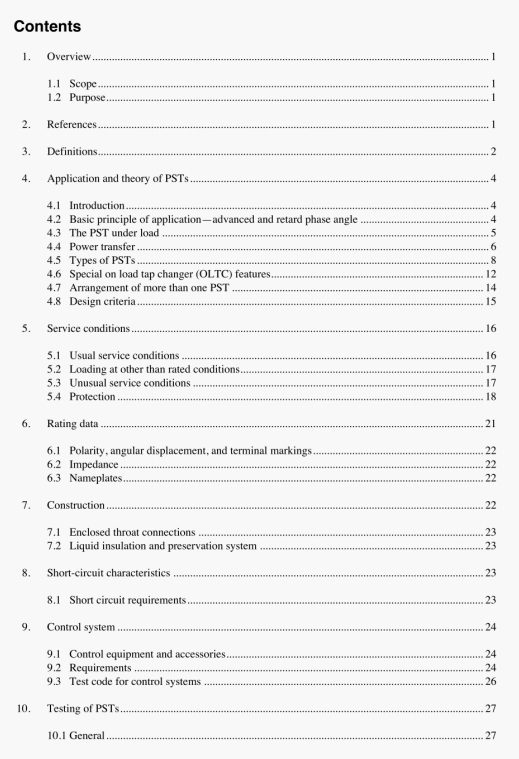IEEE Std C57.135:2001 pdf free download.IEEE Guide for the Application, Specification, and Testing of Phase-Shifting Transformers.
Both recovery voltages occurring during reversing change-over selector operation and switched current resulting from capacitances have limitations. The limit of the magnitude of this current is in the range of a few hundred milliamperes.
in special cases when a third winding with a low voltage level is specified. it may be possible to use this winding instead of the shields. Shielding has, in addition, the advantage that it protects the regulating winding from capacitively transferred transients. If shielding is not possible, one of the following solutions has to be used to solve the problem:
a) The first way is to connect the tap winding to a fixed potential during the reversing change-over operation by a fixed ohmic resistor or capacitor that is usually connected to the middle of the regulating winding and to the current take-otT terminal of the LTC. This solution is not applicable in every case (especially with arrangcrncnts according to Figure II. when no shields are used). The connection of resistors or capacitors increases the amount of switched current due to the small resistance compared to that of the capacitances.
b) The second possibility is to use an advance-retard switch (ARS) as shown in Figure 12. This switch allows the reversing change-over operation to be carried out in two steps without interruption. The regulating winding remains connected to a fixed potential during the whole operation. The limiting parameter for the ARS is the process of commutation, which has to be controlled by the ARS. It is determined by the commutation of the through current from a small inductive loop to a larger one.
4.6.2 LTC with coarse change-over selector
By using the change-over selector for inserting a coarse regulating winding, the achievable phase angle in one direction can be enlarged. If a change from advanced to retard position is required. an additional switching device, which has to be designed like an ARS, is necessary so that the switching can be performed without interruption of the load current. The ARS has to control the process of commutation which, in this case, is not only determined by the loop formed by the connecting leads hut also by the impedance of the winding itself. If the reversing operation can he carried out with a de-energized transformer, an off-circuit tap changer is sufficient. Figure 13 shows different arrangements with coarse change-over selectors (a. h) and, in addition, the use of two LTCs (C). Also the arrangement of an ARS for the exciting winding of the series transformer is shown in (h).
IEEE Std C57.135:2001 pdf free download
